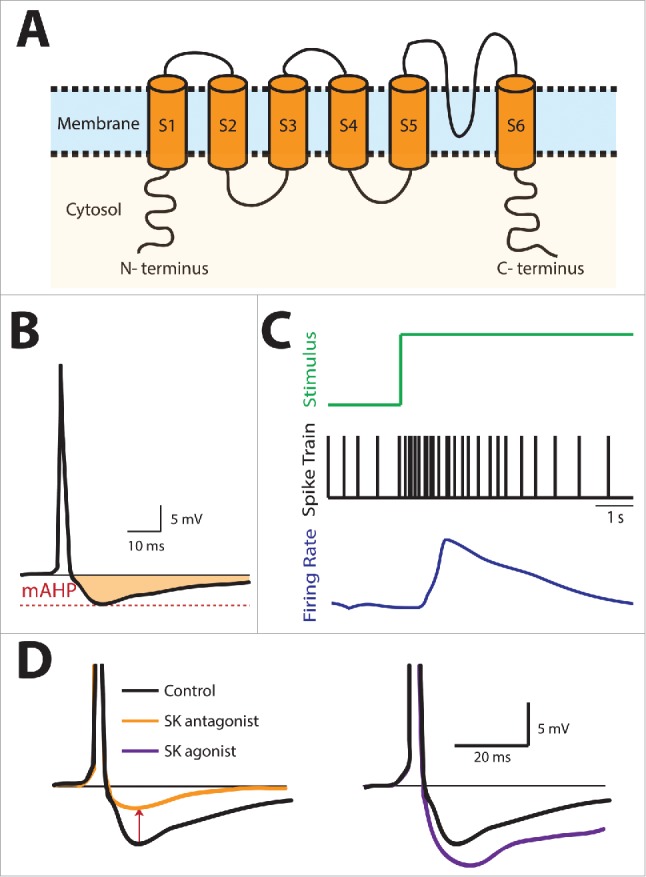Figure 1.

Summary of SK channel structure and effect on neuronal excitability and spike frequency adaptation. (A) Schematic of an SK Channel showing its basic structure consisting of 6 transmembrane domains. (B) SK channels are activated by increases in the intracellular calcium concentration following action potential firing and give rise to an after-hyperpolarization (AHP) (shaded region). (C) Stimulus (top, green), spiking activity (middle, black), and filtered firing rate (bottom, blue). In response to a step increase in the stimulus, there is an initial increase followed by a gradual decrease in spiking activity and firing rate during the step that is known as spike frequency adaptation (SFA). (D) SK channel antagonist application reduces the AHP while SK channel agonist application instead increases the AHP.
